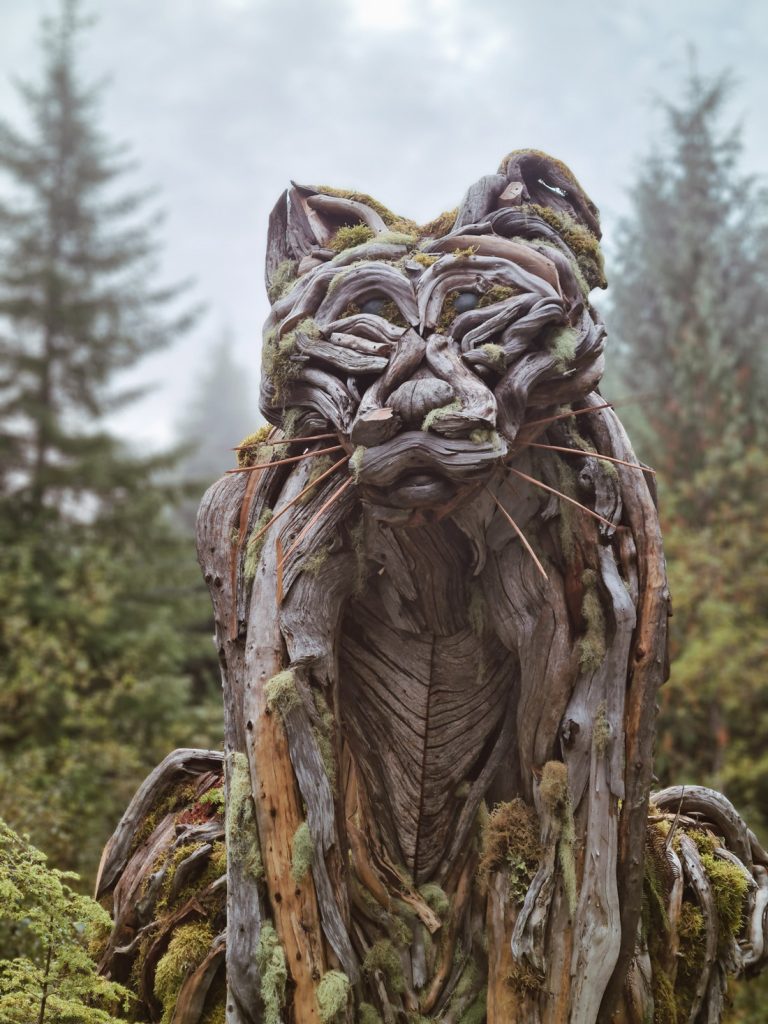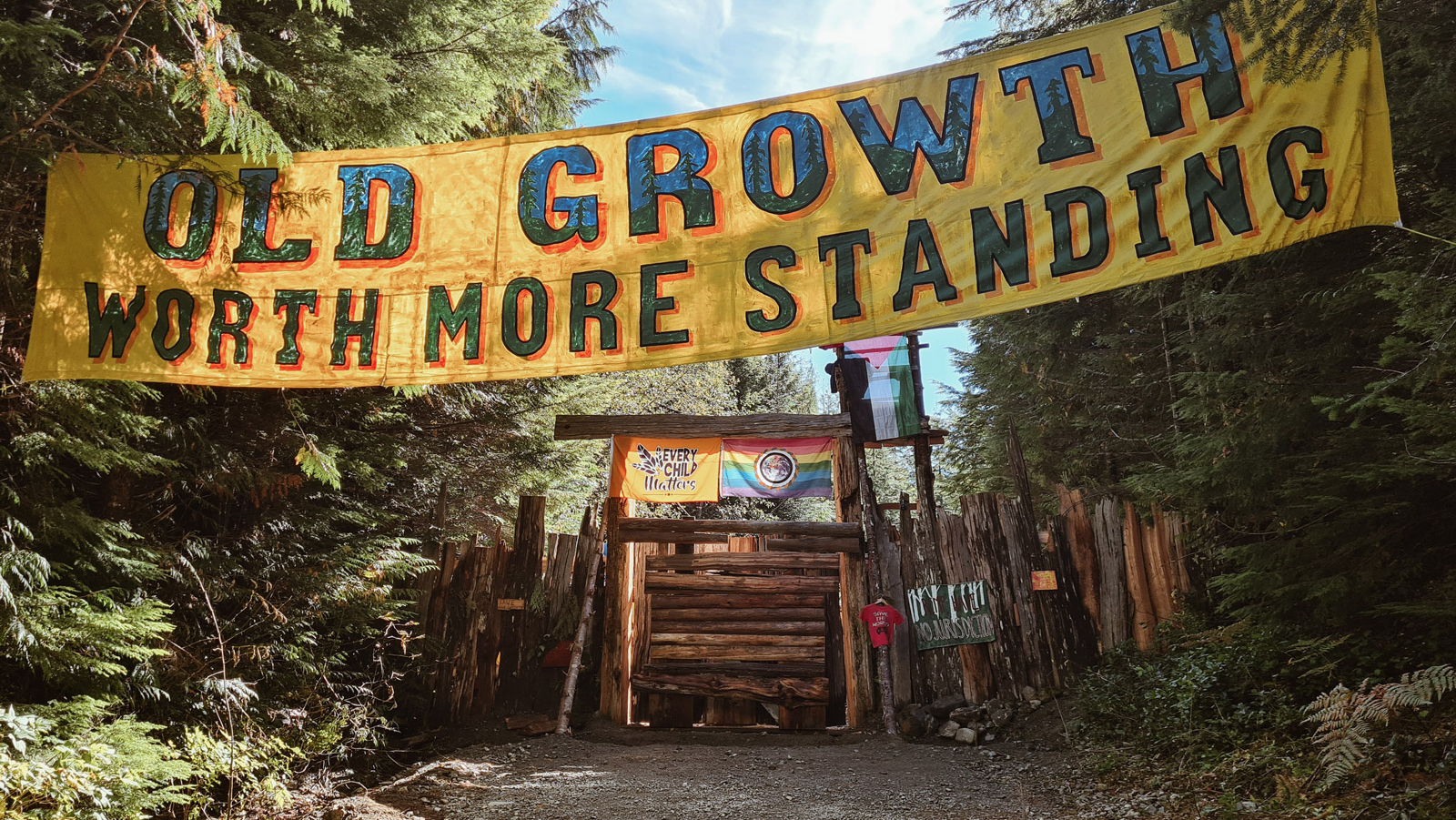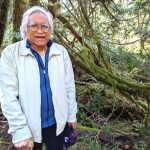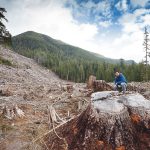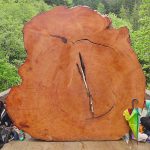In the Walbran Valley on Vancouver Island, protesters are blocking the road to thousand-year-old trees, holding a thin line between what remains and what is marked to fall. They are defying a court order, and enforcement will come. Everyone knows this. And still, people stand.
They don’t stay for headlines. They don’t stay because they’re certain of victory. They stay because something in them refuses to go numb in the face of a colonial system that treats living ecosystems like inventory. They come from cities and small towns, from different lineages and politics, not as “like-minded” activists but as heart-minded people, answering a call: protect beauty, protect life, protect what is life-giving.
The Heartbeat of Camp
At Cougar Camp, daily life hums with quiet devotion: some tend the fire, the gate, the camp kitchen; others weave, haul water, check climbing equipment, and build a cabin where visiting elders can rest. The rhythm is communal: cooking, cleaning, mending, planning, singing, preparing for the coming month, unsure how long it will be before enforcement arrives.
The camp is modest but what’s at stake is not. Beyond that gate lie stands of cedar, Douglas fir, and Sitka spruce that stabilize climate, water, and habitat far beyond their roots. The fight on the road is, in truth, a fight for the rivers below, the salmon runs, the rain patterns, the stability of the island’s living systems. It’s also a fight for land rights, Indigenous sovereignty, true reconciliation, and the principle that people can still act in solidarity.
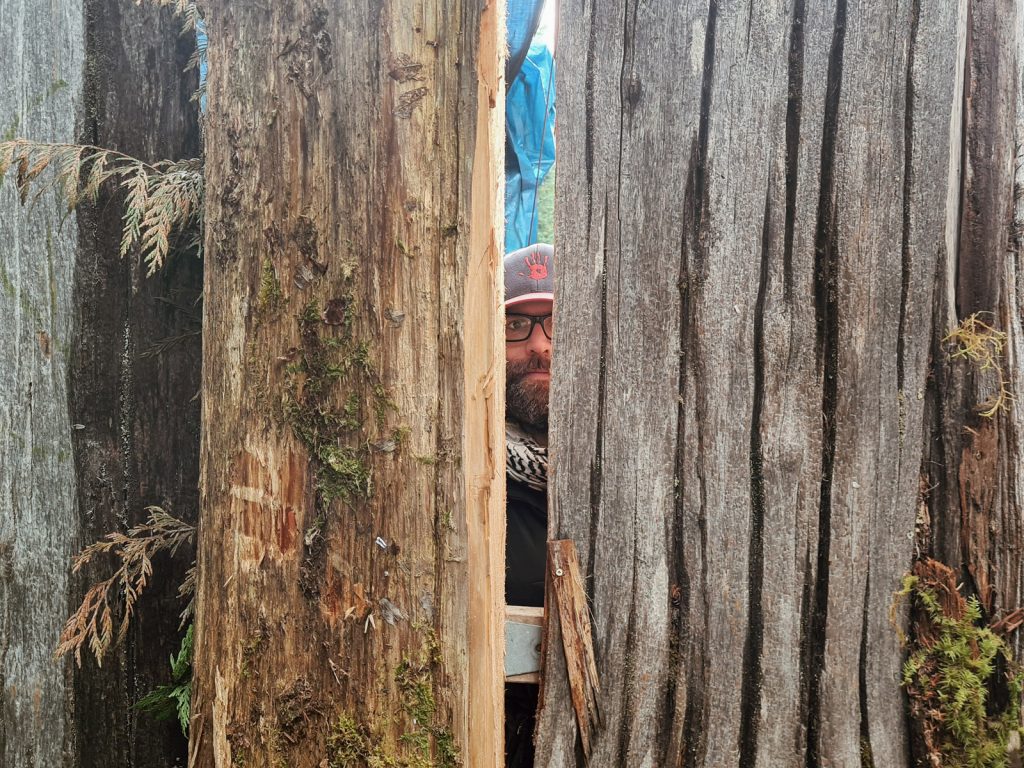
Remembering Responsibility
Many campers have adopted nicknames. Uncle Rico, a Nehiyawak land defender and the “watcher” of the camp, brings the conversation back to basics. Her drum carries through the valley like a pulse. “Everybody knows that heartbeat,” she says. She reminds people that we all come from land-based teachings and traditional medicines. “The government has done a good job making everybody forget that. And when people forget who they are, they get lost in the world.”
For Uncle Rico, the blockade is not only about stopping the chainsaws, it’s about remembering who we are. Around the fire, she invites everyone, settler descendants, newcomers, First Nations, to share their ancestry. “Because that’s something we do in culture,” she says. It’s a practice meant to restore pride and honesty about place and ancestry, alongside a sober truth: “Unless you’re First Nations, you’re not actually from Turtle Island.” The invitation that follows is straightforward: “We need to respect each other and help each other grow, while also respecting that right here we’re in a current genocide on First Nations land and really need to uphold that genocide.”
Alongside the fight for the forest, there’s a decolonizing of the mind that happens here. “Nothing can be changed in the outer world until we change ourselves and how we move with each other,” she say and an implicit reminder that defending land is everyone’s duty: “We’re all different, but at the end of the day, the one thing that stays the same is how we’re supposed to steward the lands.”
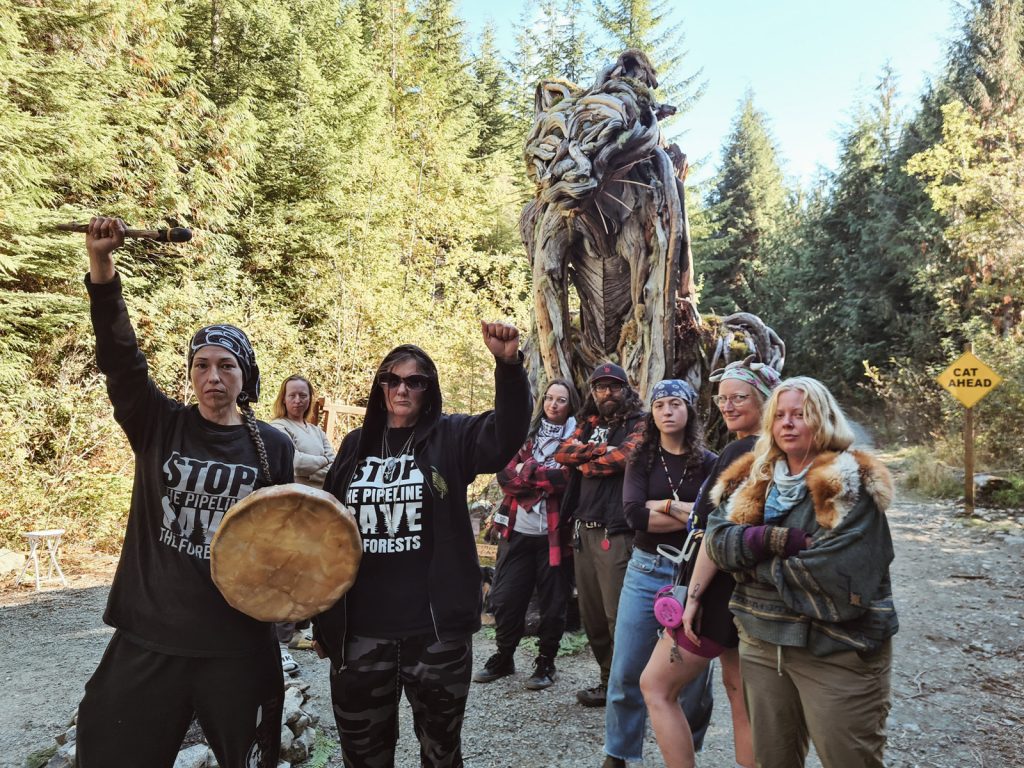
Pacheedaht elder Bill Jones is a pillar of the movement. His wish for the camp is simple yet radical: that it functions as a community “as if colonization hadn’t happened,” a place of right relationship between settlers and First Nations. Too frail to live on site full time, he visits regularly, offering prayer and counsel. His grand hope is “to save all the old-growth forest,” and he’ll work toward that, he says, until he goes to heaven.
For many, the call to defend these forests is inseparable from the grief of knowing they may not be saved.
Standing in a Broken System
Crusty, 34, says he has been fighting for the Walbran for a decade – and he was on the front lines at Fairy Creek. His deep and intimate relationship to the forest is his life path and life force. What once felt like harmonious trail-building now feels unsustainable and sacrificial. Burnout and heartbreak are common among long-term activists, and each loss feels personal. The exhaustion is palpable. He is feeling “threadbare” and “tested,” and yet, he is here, standing because he cares more than anything, and stopping is not an option.
A blockade is a sandcastle before the tide.
Crusty points to the deeper contradictions of British Columbia’s system: ecological species legislation that protects industry more than ecosystems; reconciliation processes that make Indigenous sovereignty the primary legal avenue for protection, but sometimes tie Indigenous nations to the same colonial economy that’s destroying their land, forcing communities to choose between land and livelihood.
Because of this political complexity and to respect Indigenous sovereignty, protesters would not interfere with Indigenous-led logging on Indigenous-owned land, even when it’s painful to watch. They try not to repeat colonial patterns and are here to challenge colonial companies on so-called public land, the ones still profiting from stolen territory.
At Cougar Camp, Crusty says his role is clear: turn conviction into competence. With other veterans, he trains newcomers in safety, law, logistics, and care. The point is capacity, skills and relationships that outlast one camp and make the next one stronger. What they’re building isn’t only a moment but muscle: people who can go home, form resilient crews, withstand burnout, keep each other safe, and, when necessary, hold the next blockade with greater discipline and care. Spreading like mycelium.
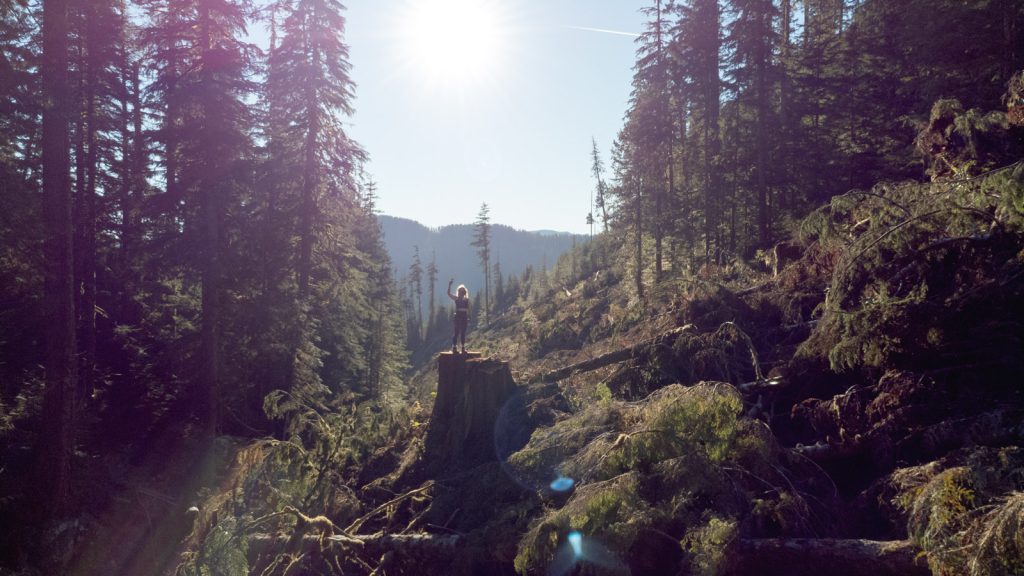
Faces of a Movement
The blockade is a cross-section of ordinary people who decided not to look away.
Deer is a young content creator who arrived while travelling through Vancouver Island, posting daily videos on his YouTube channel. He’d always appreciated trees in a scientific way, but hearing stories from Elder Bill and witnessing his relationship with the forest, deepened his own understanding and connection. Camp life gave him structure and cut through distraction like phone addiction. Less stressed and in a “happy state of mind,” his motivation shifted from self-driven production to participating in daily work, with a longer vision: a comprehensive documentary to build international understanding and involvement, trusting that outside pressure can “embarrass the locals into acting.”
Fog and Philo were on a road trip. Seeing the central Walbran (saved by a blockade in the 1990s) and Big Lonely Doug, a thousand-year-old Douglas fir spared in 2011 in a clear-cut, revealed the scale of loss. They were awed: you don’t have to be spiritual to stand in front of a tree that old and feel reverence. Initially hesitant, they were swayed by Elder Bill Jones’ invitation and his lawsuit highlighting spiritual freedom and the cultural impact of logging on Indigenous communities. A planned visit became a month-long stay, 2,500 km from home. They see old-growth logging as a continuation of genocide, forcing Indigenous communities to sacrifice land and culture for survival in a colonial, capitalist system. Fog struggles with hope but holds to the principle that “even if it’s hopeless, it isn’t pointless; every action matters. Even if all we do is make someone feel less alone.” Philo finds hope in diverse people uniting for a common cause, “like-heartedness” more than like-mindedness, and in relearning interdependence while refusing to pretend that everything’s fine.
Nettle, 22, a “guest of this land,” feels a “duty” to act in solidarity. A first encounter with a “huge Sitka spruce” took her breath away years ago. She doesn’t see herself as the “voice of the trees,” but as “listening and showing that there are people who will listen and try to translate it.” Where logging companies may see “a big old piece of wood,” she sees “beings” that deserve to “stay standing.” She drove 24 hours to provide ground support, the unglamorous tasks that make a blockade hold. For her, showing up is a refusal to “stand by while something happens.” Grief is part of why she’s here, especially in the presence of the trees, but she chooses to focus on hope.
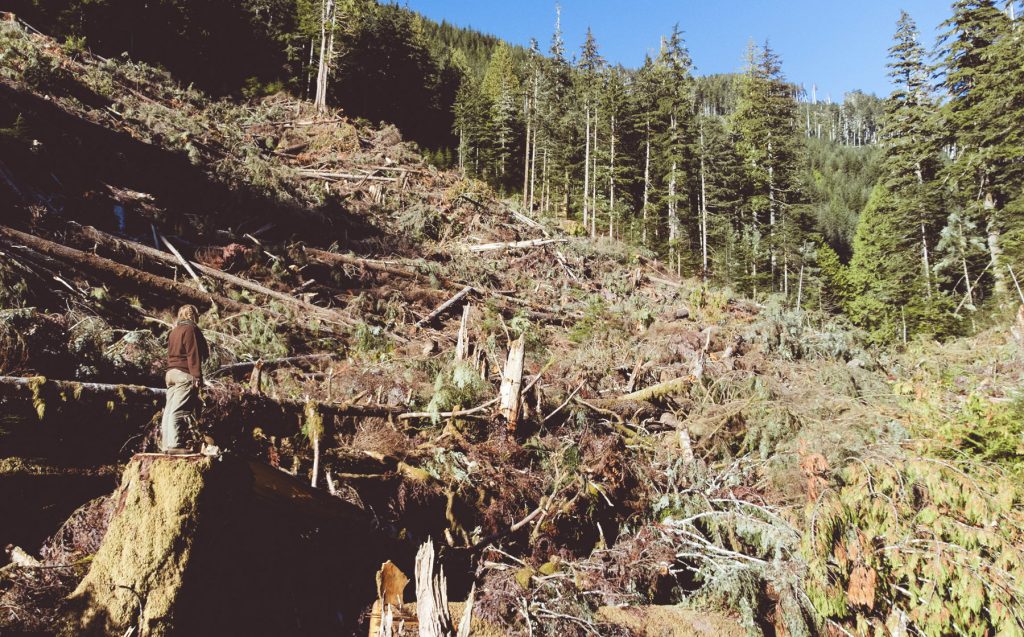
Beyond Despair
A thousand-year-old tree holds roughly forty human generations. Can you name forty generations of your ancestors? When this cedar was still a seedling, many of our European ancestors still remembered what it meant to live in relationship with land. They were fighting the Roman Empire’s expansion into their own sacred waters, groves, and trees. There is nothing romantic about this contrast. In a century of settlement and extraction on Vancouver Island, we went from nearly 100% old growth to under 3%. Clearcutting doesn’t only remove trees; it destabilizes watersheds, releases centuries of stored carbon, unravels habitats, and breaks time-built soils and relationships no plantation can replace. Today, we protect 200-year-old buildings as “heritage,” yet accept unprotected felling of trees five to ten times older.
Blocking the road interrupts the machinery of loss and forces the public to look directly at what is otherwise hidden in remote valleys. Nobody at camp confuses hope with odds. A blockade is a sandcastle before the tide. But the work continues because small actions still matter.
Hope, in this context, is not optimism. It’s a conscious practice. It’s tending the fire even when the storm is coming. It’s remembering that protecting the Earth isn’t new, it’s ancestral. It’s our birthright as a species of this planet, the Earth defending itself, and long overdue in policy. It’s choosing connection over numbness, and responsibility over wishing someone else would fix it.
In the shadow of loss, something ancient stirs. Around the fire at Cougar Camp, people are relearning the oldest human skill: how to live together. They’re re-membering what it means to belong to a place, to each other, to the more-than-human world. When enforcement arrives and the camp is torn down, what will remain are the bonds, the stories, and the knowledge that life is worth defending. And perhaps that, more than anything, is where hope takes root.
Roots, Not Slogans
Forests communicate underground through mycelial webs, roots speaking to roots. The beauty we see above ground is only possible because of the unseen network below, the slow accumulation of relationships. Maybe that’s what’s happening here too: while many in the Western world are cut off from their roots, small communities like this are growing new ones.
We need better endangered-species laws, protection for the last intact old growth, revenue models that don’t force communities to choose between jobs and ecosystems, and a reconciliation framework that isn’t just extraction by another name.
The real blockade isn’t just on a logging road in the Walbran Valley. It’s in the growing number of hearts that have decided: “Enough!” and then organized their lives around that decision.
